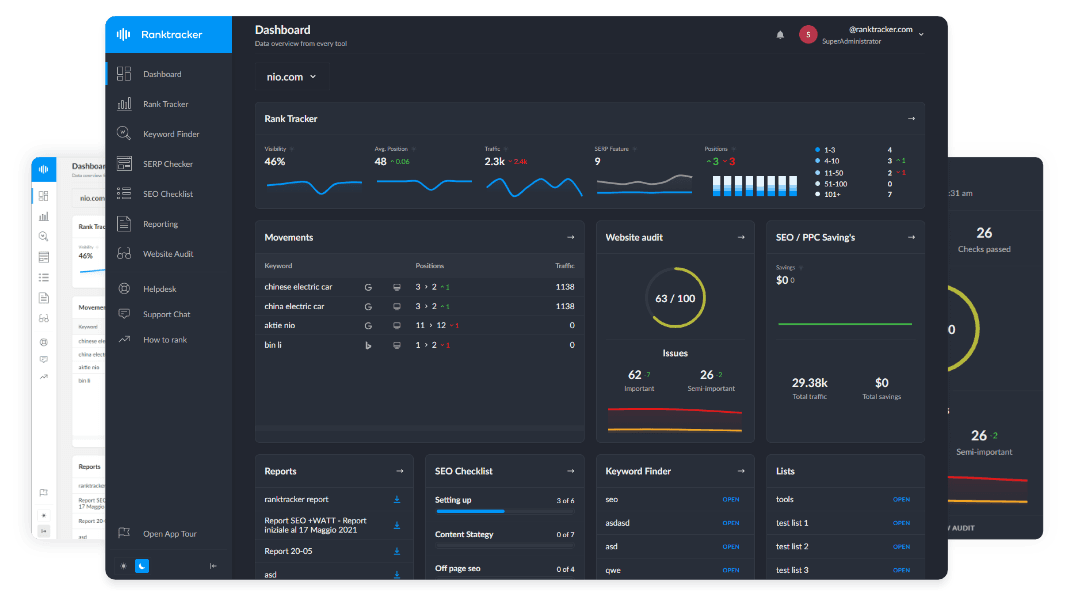Intro
You’ve managed to get traffic to your site, but they’re not staying long. If this doesn’t concern you, it should. If users jump in and out of your site, search engines see this, and you won’t rank very highly.
What’s going wrong? It could be several things, but one significant reason may be that you’re not meeting user intent. Therefore, we’re here to explain user intent, why it’s so vital for SEO, and tips for keeping users on your site.

User Intent and Why It’s So Crucial
User intent, also called search intent, is the objective a person has when they type a query into a search engine. It’s what they’re looking for when they navigate to a specific site. If they don’t find what they’re after, their user intent hasn’t been met, and they leave. This is known as bouncing, and it’s one of the biggest fears for most site operators.
Types of User Intent
There are generally four types of user intent:
- Commercial: The user wants to compare brands before making a decision. For example, “Best running shoes for under $500.”
- Navigational: The user needs to get to a place, whether physical or online. For example, “How do I log in to my bank online?”
- Transactional: The user wants to buy or pay for something. For example, “Pay my phone bill online.”
- Informational: This is the one with the easiest ability to keep a user online. The user wants to learn something. For example, “How many gold medals did the US win in the last Olympic Games?”
Why Does User Intent Matter to SEO?
It all comes down to search engine ranking. Most site owners dream of their pages appearing on page one of Google, and there’s no reason why they can’t. They just need to meet these criteria:
- Relevance: Does your content align with user intent? If so, Google’s algorithms, like RankBrain, are designed to interpret and then reward this content.
- Authority and trust: Consistently satisfying user intent establishes your site as a valuable resource. The more people dwell on your site and interact with it, the more your site demonstrates that it offers something of value to users. Search engines love sites with perceived authority.
- Improved conversion rates: If a user follows a link to another page on the site, leaves a comment, shares the page’s link, or makes a transaction, this is considered a conversion. These boost your effectiveness and your return on investment (ROI).
The Dwell Sweet Spot
How do you know that you’ve successfully met user intent? One of the ways is by the amount of time users spent on the site. According to experts, the sweet spot is between two and four minutes. This allows search engines to determine whether your content is relevant and engaging, increasing the chances of the site ranking higher.
On the other hand, if your site is seeing high bounce rates, this should cause a red flag for you, the site owner, as it shows that user intent isn’t being met. This could be because the content isn’t meaningful or doesn’t match the query.
So, how do you hold a user’s attention past the two-minute mark? The strategies below can help.
Keeping Users Engaged
Now that you know what the sweet spot is, you need to find ways to keep your users engaged. Here are some tips:
Use Engagement Incentives (Casino Example)
For example, online gambling sites like VIP casinos are a niche where long-term retention is crucial. These platforms aren’t just after clicks; they aim to convert high-intent users into loyal customers. They can do this in a variety of ways, including:
- Range: Provide a broad range of games to attract not only card players, but players who like to win at horse betting, dice, roulette, and other games.
- Points system: Never underestimate the power of giving your players the ability to earn points they can redeem for something of value. If a player has a points target, they’ll remain on the page much longer as they strive to get there.
- Online community: Many casino players love to talk and swap stories with other players. By building a community into the site, players can chat during or between games.
These tips don’t only apply just to casino sites. They can be used for almost any commercial site.
Strategic Placement of the Answer
If a user has a question and needs the answer, a search engine can usually point them to a site that, unless it’s clickbait, will likely provide what they’re looking for. As the site owner, if you’re striving for the two- to four-minute dwell, don’t answer the question in the first paragraph. Naturally, once they have their answer, the majority will leave the site.
The All-in-One Platform for Effective SEO
Behind every successful business is a strong SEO campaign. But with countless optimization tools and techniques out there to choose from, it can be hard to know where to start. Well, fear no more, cause I've got just the thing to help. Presenting the Ranktracker all-in-one platform for effective SEO
We have finally opened registration to Ranktracker absolutely free!
Create a free accountOr Sign in using your credentials
There’s a fine line between keeping a user engaged and wasting their time. Provided you’re giving the user relevant and educational information, there’s no harm in holding off on answering the search query until after the two-minute mark. However, if what’s being provided lacks relevance or anything of interest, the user will bounce anyway, making the page ineffective. It’s an art to get this balance right, but if done correctly, it’s a win for both the site and the reader.
Using Backlinks
Backlinks continue to be a key factor in Google’s ranking algorithm. Think of them as “votes of confidence” from one site to another. However, a backlink, especially if it’s appealing, may cause the user to click on it and leave the site. To avoid this, never put a backlink in the introduction, and if you can, hold off on using it until at least the two-minute reading mark has passed.
Focus on User Intent to Drive Rankings and Results
Retention is just as important as traffic; you’ve got users to your site, but have they stayed? Keeping them there for the two- to four-minute sweet spot is the goal. Ensure that you’re not padding the page with useless or irrelevant information. Instead, keep the user engaged, give them reasons to stay on the page, and watch your user intent and search engine ranking improve.

